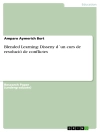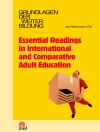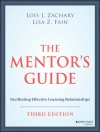This book examines educational semiotics and the representation of knowledge in school science. It discusses the strategic integration of animation in science education. It explores how learning through the creation of science animations takes place, as well as how animation can be used in assessing student’s science learning.
Chapter 1 is available open access under a Creative Commons Attribution 4.0 International License via link.springer.com.
Cuprins
SECTION I: Introduction.- 1 A multidisciplinary perspective on designing and using animations in school science education; Len Unsworth.- SECTION II: Educational Semiotics and the Representation of Knowledge in School Science.- 2 A functional perspective on the semiotic features of science animation; Yufei He.- 3 Spatiality and temporality in the visual representation of science diagrams and animations; Theo van Leeuwen.- 4 Infusing pro-environmental values in science education: A multimodal analysis of attitudinal meaning in ecology animations for children; William Feng and Len Unsworth.- 5 Multimodal Affordances of Virtual Reality (VR) for Visualising and Learning Molecular Interactions; Kok-Sing Tang.- SECTION III: Strategic Integration of Animation in Science Education.- 6 Using animated simulations to support young students’ science learning; Garry Falloon.- 7 Promoting Scientific Understanding through Animated Multimodal Texts; Maximiliano Montenegro, Alejandra Meneses, Soledad Véliz, Pablo Escobar, Marión Garolera and María Paz Ramírez.- SECTION IV: Learning through Creating Science Animations.- 8 Constructing a Representational System: Engaging Students with Science Content using Student-generated Animations; Garry Hoban.- 9 Student-Generated Animations for Knowledge Building in the Chemistry Class; Zeynep Yaseen.- 10 Animation construction as cross-mode recasting in Year 11 biology; Russell Tytler, Peta White and Wendy Nielson.- 11 Creating a digital explanation in preservice teacher education: Preparing primary teachers for the literacy demands of a complex digital task; Wendy Nielsen.- SECTION V: Using Animation in Assessing Students’ Science Learning, – 12 Towards more valid assessment of learning from animations; Ric Lowe.- 13 Exploring students’ scientific competency performance on PISA paper-based assessment and computer-based assessment; Ya-Chun Chen, Zuway-R Hong, and Huann-shyang Lin.- 14 Animation in online school science assessment: The Validation of Assessment for Learning and Individual Development (VALID) Program; Jennifer English and Annalies van Westenbrugge.-
Despre autor
Len Unsworth is Professor in English and Literacies Education in the Institute for Learning Sciences and Teacher Education (ILSTE), at the Australian Catholic University in Sydney, Australia. Len’s current research interests include systemic functional semiotic perspectives on multimodal and digital literacies in English and in curriculum area teaching and learning in primary and secondary schools. He is the lead researcher on an Australian Research Council funded project on Multiliteracies for Addressing Disadvantage in Senior High School Scienceand has published in the International Journal of Science Education and in Research in Science Education with an extensive record of publication in leading journals in literacy and education as well book chapters and a number of books, including recently: Functional Grammatics: Reconceptualising Knowledge about Language and Image for School English with Mary Macken-Horarik, Kristina Love and Carmel Sandiford (Routledge, 2017); English Teaching and New Literacies Pedagogy: Interpreting and authoring digital multimedia narratives with Angela Thomas (Peter Lang Publishing 2014); and Reading Visual Narratives (Equinox, 2013) with Clare Painter and Jim Martin.












